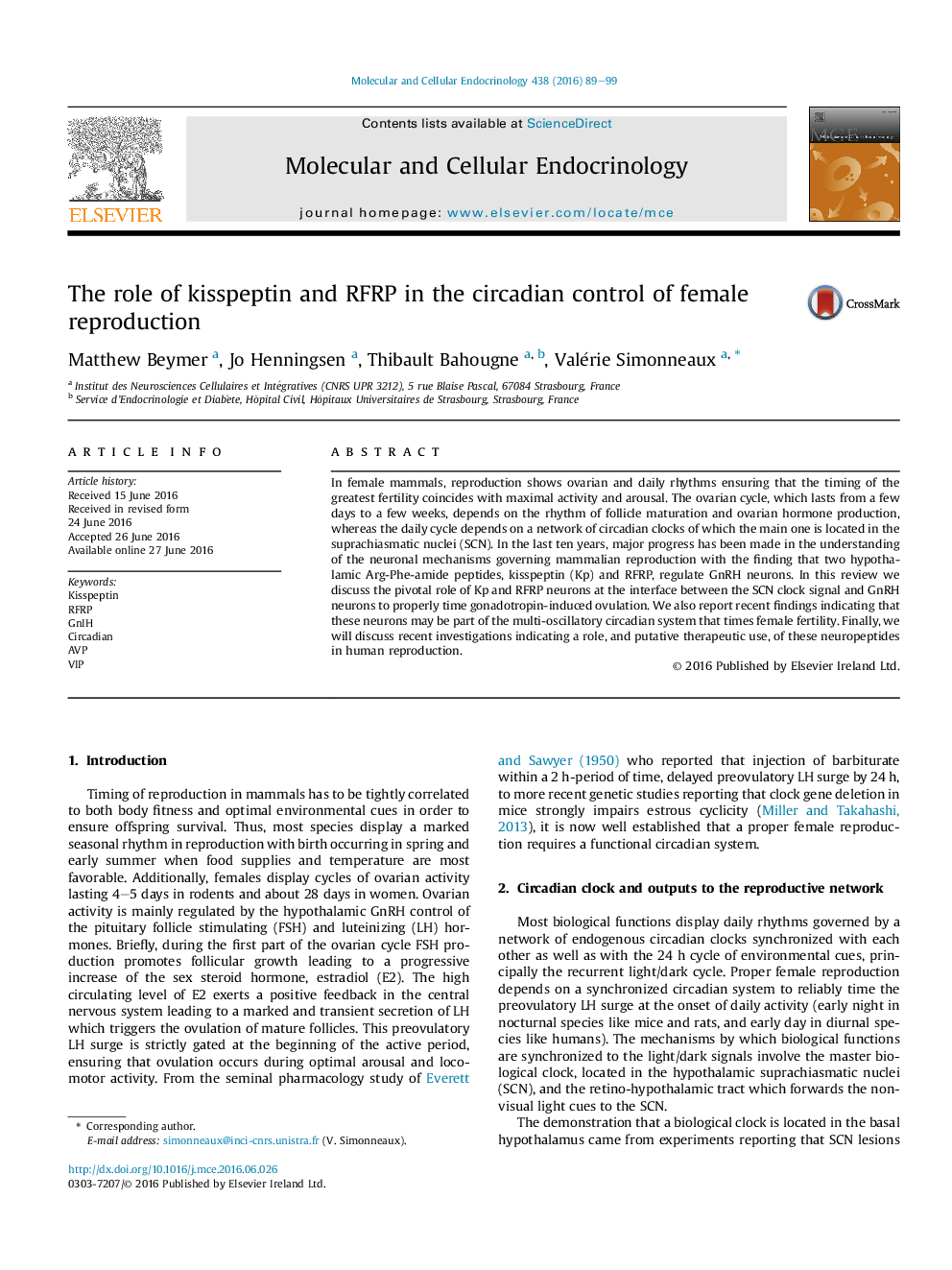| Article ID | Journal | Published Year | Pages | File Type |
|---|---|---|---|---|
| 5534256 | Molecular and Cellular Endocrinology | 2016 | 11 Pages |
â¢The SCN uses two pathways to convey timing signals to Kp, RFRP, and GnRH neurons.â¢AVPergic inputs to Kp, gated by E2, allow regulation in the timing of activation.â¢VIPergic inputs, both inhibitory and activatory, project to RFRP and GnRH neurons.â¢Kp treatment in humans could be effective against multiple reproductive disorders.
In female mammals, reproduction shows ovarian and daily rhythms ensuring that the timing of the greatest fertility coincides with maximal activity and arousal. The ovarian cycle, which lasts from a few days to a few weeks, depends on the rhythm of follicle maturation and ovarian hormone production, whereas the daily cycle depends on a network of circadian clocks of which the main one is located in the suprachiasmatic nuclei (SCN). In the last ten years, major progress has been made in the understanding of the neuronal mechanisms governing mammalian reproduction with the finding that two hypothalamic Arg-Phe-amide peptides, kisspeptin (Kp) and RFRP, regulate GnRH neurons. In this review we discuss the pivotal role of Kp and RFRP neurons at the interface between the SCN clock signal and GnRH neurons to properly time gonadotropin-induced ovulation. We also report recent findings indicating that these neurons may be part of the multi-oscillatory circadian system that times female fertility. Finally, we will discuss recent investigations indicating a role, and putative therapeutic use, of these neuropeptides in human reproduction.
